In October 2022, in the presence of UN Secretary-General Antonio Guterres, India’s Prime Minister Narendra Modi launched Mission LiFE, or Lifestyle for Environment, intended to be a three-pronged approach to India’s fight against the climate crisis. In his speech, beyond government and corporate action PM Modi highlighted individual and community action as a critical contributor towards a more sustainable future, pitching for behavioral change and ‘pro-planet’ steps by the public to drive change. While there is a debate on whether individual action can do enough to move the needle on sustainability, in a megacity like Mumbai where civic management leaves something to be desired, citizens have always taken the lead to plug gaps and show that change can be brought about through determination and the work of ordinary people.
Environmental Changemakers of Mumbai: Tales of Local Heroes
21 August 2023 | Photography by Hoshner Reporter
Afroz Shah
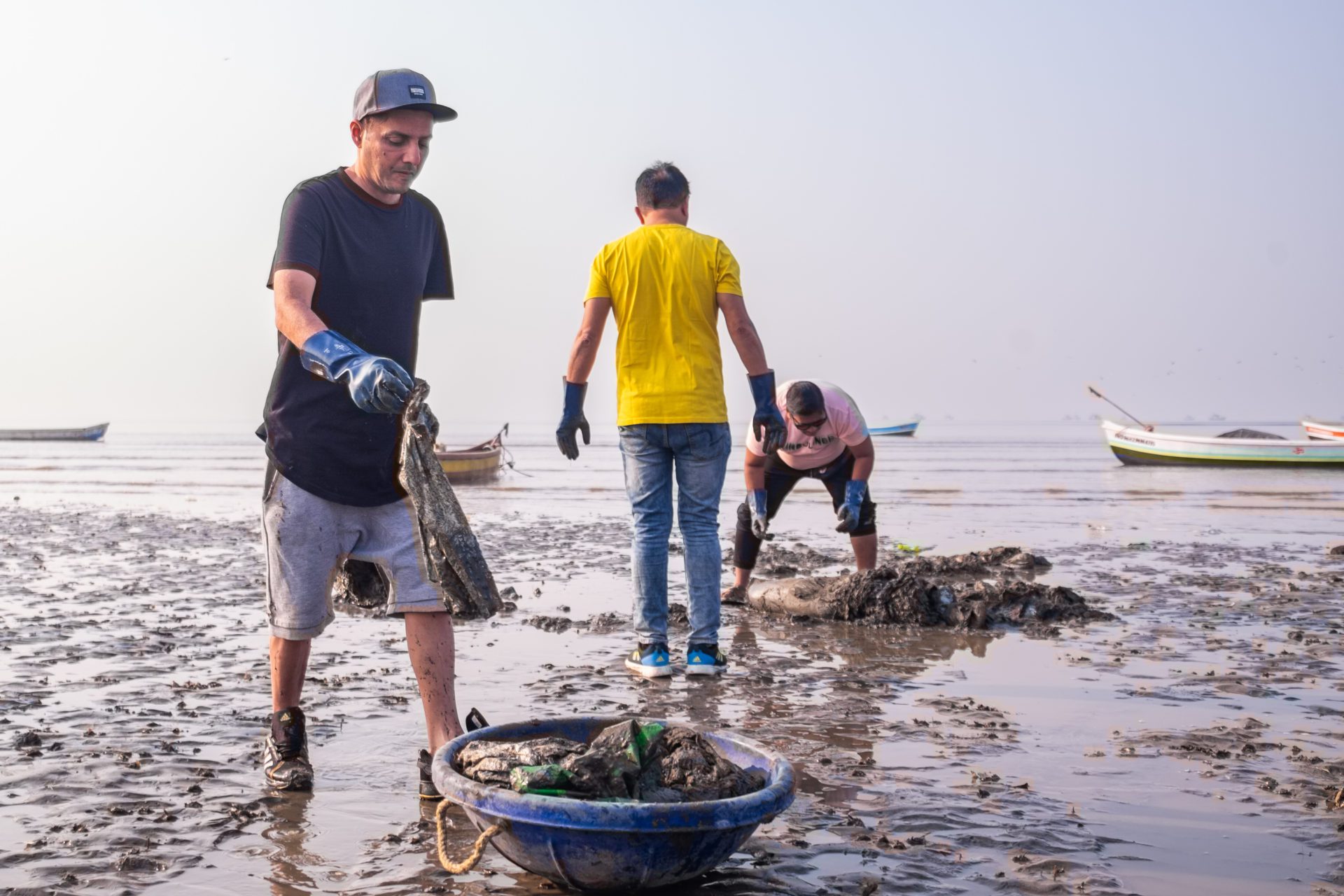
Afroz Shah is cleaning a small stretch of Versova Beach with his team of volunteers. It is week 408 of doing this, but Shah’s focus and enthusiasm toward the task at hand have not waned. All types of garbage are here, from old clothes, food packaging, and tarp sheets to other waste that should never reach the sea. Since starting with beach clean-ups almost eight years ago, Shah has become somewhat of a local hero, recognized nationally and internationally, for his dedication, impact, and ability to inspire others to join him, week after week. Besides the beach, Shah and his team run clean-up programs in slum areas around Versova, in the tribal padas (villages) of Sanjay Gandhi National Park (SNGP), and around Mumbai’s polluted Mithi River.
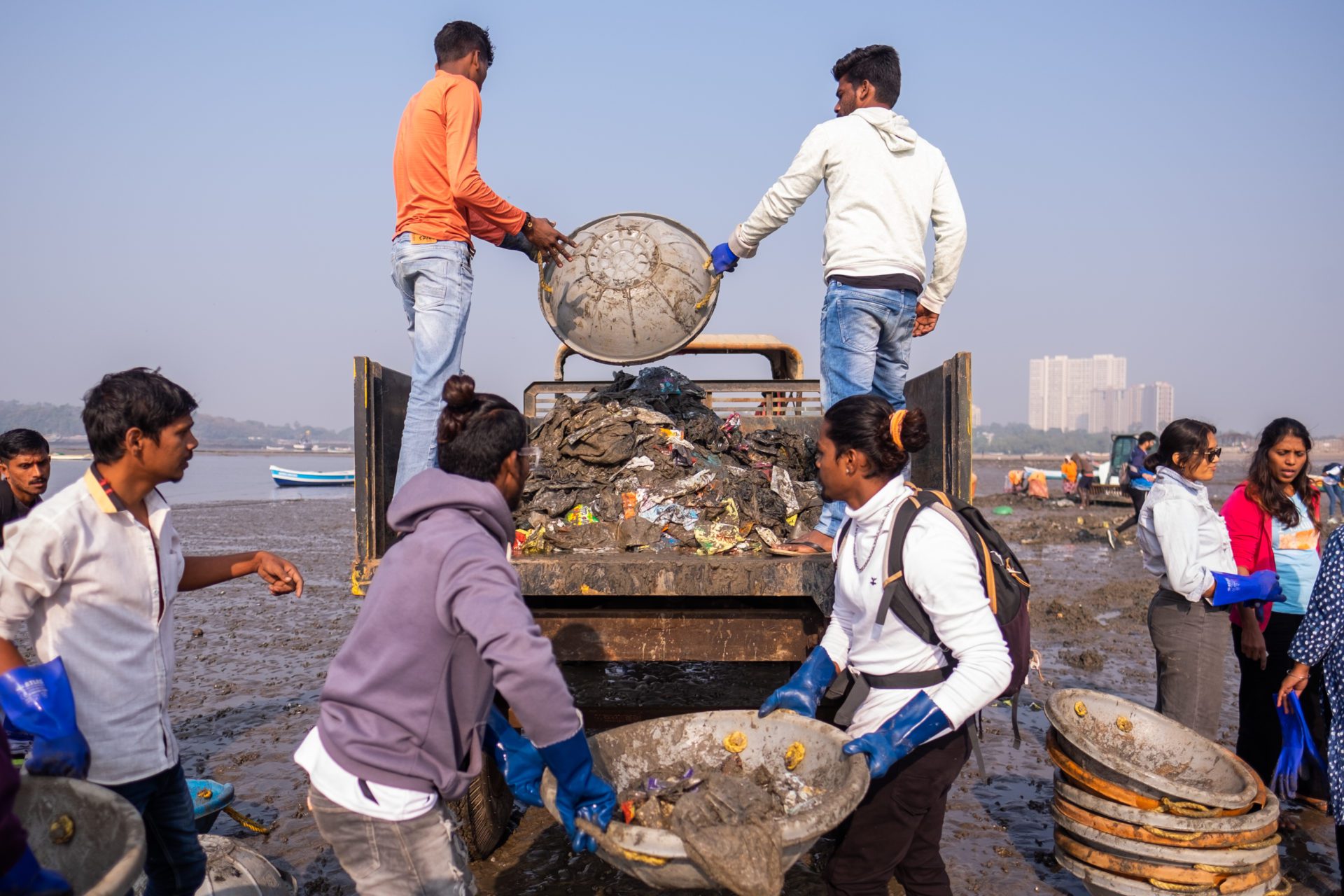
Shah and his team also run a host of programs aimed at reducing plastic waste at source. This includes providing vegetables, rations, and 65 other household items, which are typically available in small single-use plastic packets (detergents, shampoos, spices) to slums and areas without packaging or in reusable containers. The items are procured in bulk and supplied at cost, encouraging people to keep buying from them and creating a virtuous cycle. Shah estimates that these initiatives have reduced plastic pollution in the areas served by 50-60%, which is visible during the clean-up drives as well. “People think these activities are about keeping the beach clean, but it is about changing mindsets and creating leaders,” Shah says. When you have picked waste with your own hands, he explains, you are less likely to litter and more likely to influence those at home as well, and therein lies the change.
Sanjiv Valsan
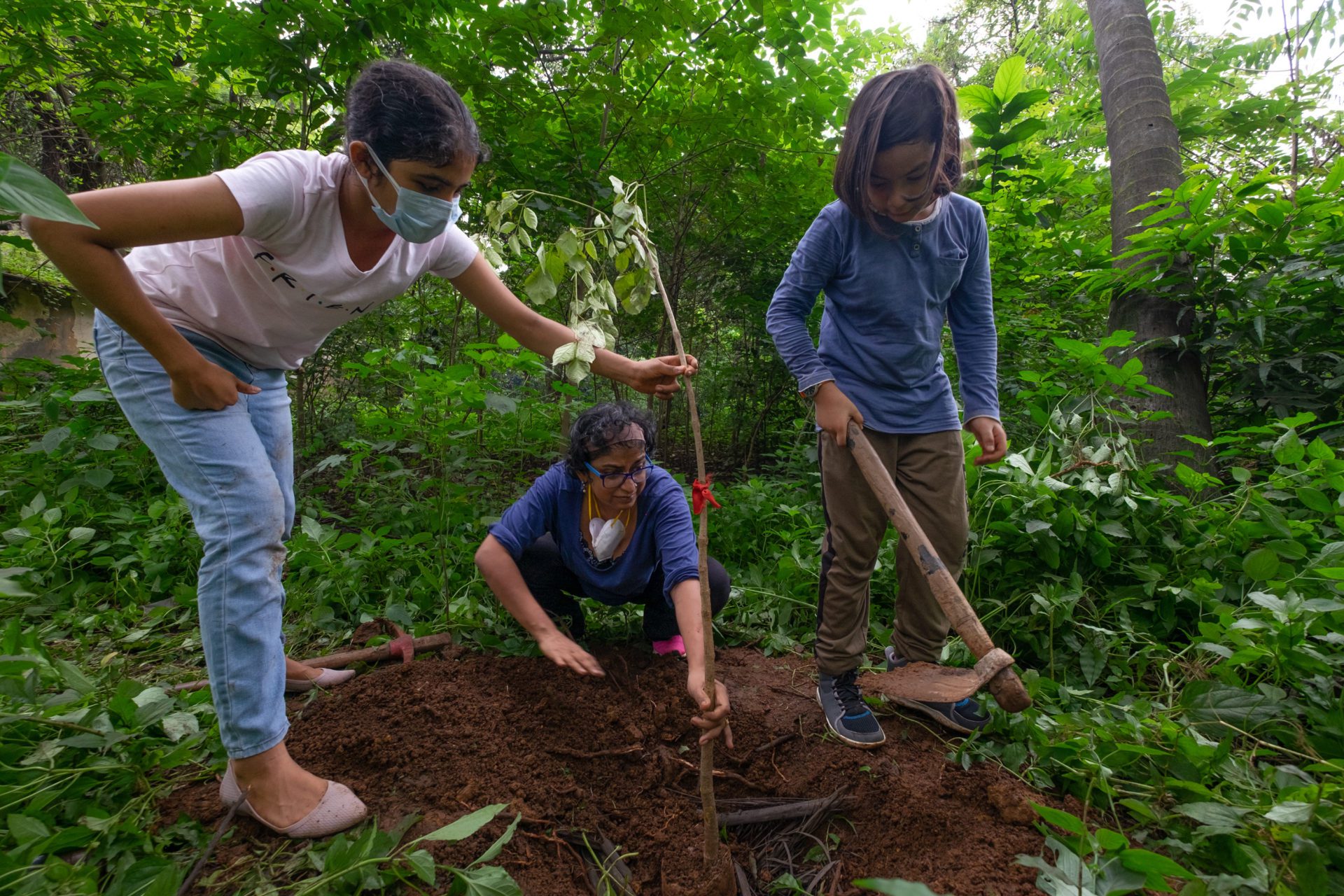
Come summer, photographer turned environmentalist Sanjiv Valsan has a lot on his hands. Besides his work on a tree plantation, he is also a one-man coordinating agency for putting out forest fires that spring up every other day around Aarey, a 1300 hectare forest adjoining the SGNP. Through a WhatsApp group, Valsan receives information about fires and coordinates with other volunteers who act as first responders. The fires are common in the summer, and while some are accidental, others are more systematically set, often with the intent of clearing trees to settle slums. As water is not readily available, until the firefighters arrive, Valsan and his volunteers put out the fires by smothering them with whatever is available, a task at once challenging and dangerous. To balance out the cutting and burning of trees within the forest, Valsan has been regularly planting trees across Aarey.
“We started the tree plantation work around 2019 when the issue of cutting trees for setting up the Metro car shed was happening,” Valsan says. “For us, it was a form of citizen protest, one where people from all classes of society came together for the common goal of saving our forest.” But, as Valsan explains, it is not just about planting trees, which can be a form of instant gratification. The hard work is caring for these trees in the dry months to make sure they survive. Another initiative that is close to his heart is the partnership he has struck up with Vinita Thakarey, a tribal farmer who lives in the hamlets within Aarey. Vinita Tai, as she is known, and Valsan host regular workshops which help raise awareness amongst students and city-dwellers on the delicate balance of the unique forest ecosystems within Mumbai.
Stalin Dayanand
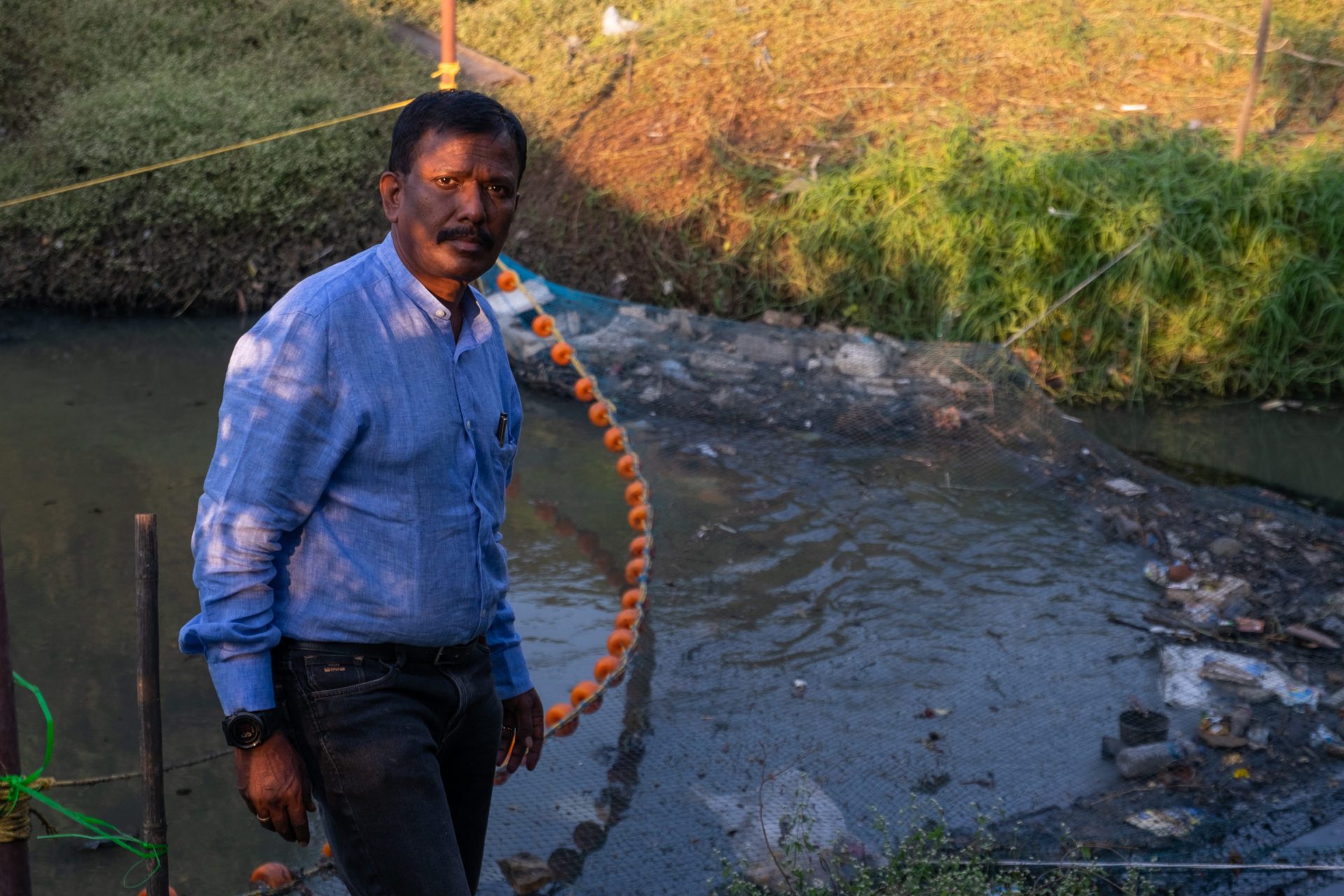
“Did you know that the authorities had no definition in their plans for wetlands in a city like Mumbai? They simply referred to them as wastelands!” Stalin Dayanand says incredulously. “It was only after our intervention that this changed.” Such interventions have become common for Dayanand and his team at the NGO called Vanashakti, which has doggedly fought the state on a number of different environmental issues in India’s state and supreme courts. Some of Vanashakti’s success stories under Dayanand include making polluters, including government agencies, pay for cleaning up the Ulhas River, working for the notification of the Thane Creek Flamingo Sanctuary (TCFS), helping get 812 acres of Aarey notified as reserve forest, and pushing government agencies to hand over mangroves in Maharashtra to the forest department for protection.

Though known for their environmental litigation and activism work, outside the glare of public attention, Vanashakti also works with schools on environmental awareness programs and helps create livelihoods for Waarli artists of Tansa Valley in Maharashtra. Dayanand is also working on preventing waste from seeping into mangrove areas across the city by deploying low-cost and easy-to-set-up solutions like nets, and more long-term projects like campaigning to shift the largest Deonar dumping landfill in Mumbai’s Kanjurmarg area, which adjoins the Thane Creek Flamingo Sanctuary’s eco-sensitive zone (ESZ).
Kedar Sohoni
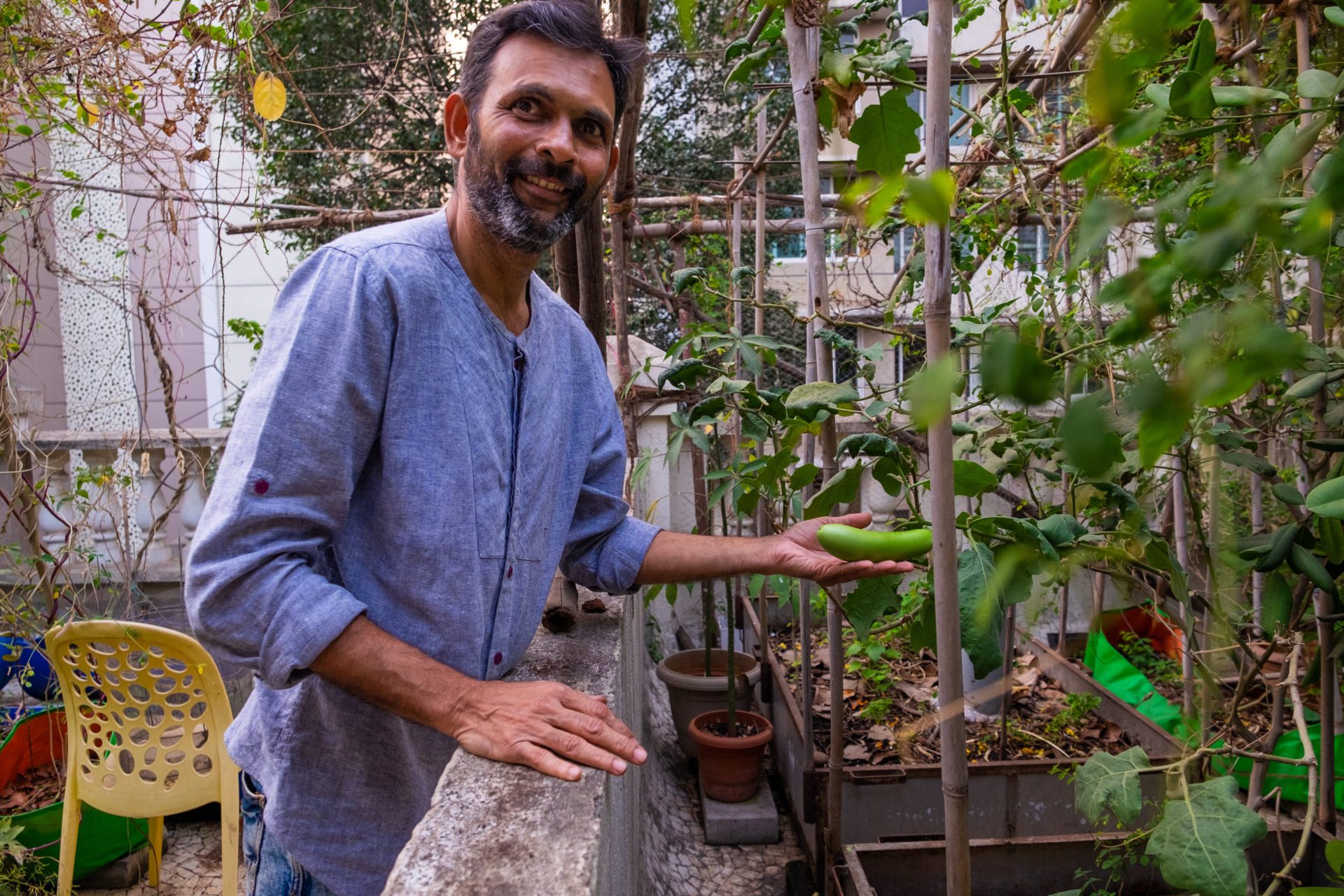
Kedar Sohoni’s journey towards a more sustainable lifestyle started with a simple focus on eating healthier food. In 2015, he started composting his kitchen waste as a first step towards growing his own organic produce. He soon realized that composting at home was a relatively simple process that could also aid in reducing waste reaching landfills. Mumbai generates the highest waste per day amongst metro cities in India. Most are dumped in the main landfill in Kanjurmarg, resulting in health hazards for neighboring communities, and contamination from leachates seeping into the groundwater. Sohoni approached the management committee of his residential society with a pilot segregation project to better manage waste across its 200+ residential units. The project was a success, with the society compositing over 4,500 kgs of wet waste every month on its own premise and using the compost for its gardens. In 2017, Sohoni set up Green Communities Foundation (GCF), which has helped over 200 societies embark on their waste sustainability journeys in urban and rural areas. Sohoni believes there is more to be done.
“What is the big deal in large societies with resources segregating and composting their waste,” he asks. “This is the bare minimum we should all do.” Sohoni is now focused on slum areas, tribal areas, and villages in Maharashtra and beyond. Through education and awareness programs and setting up simple, low-resource dry waste collection systems, GCF has impacted waste collection and processing systems in semi-urban and rural areas. Sohoni estimates that 1.5 tons of dry waste are recycled every month in addition to the 4.5 tons of wet waste composted from villages in Maharashtra’s Raigad district where they work.
Vaibhavi Marathe
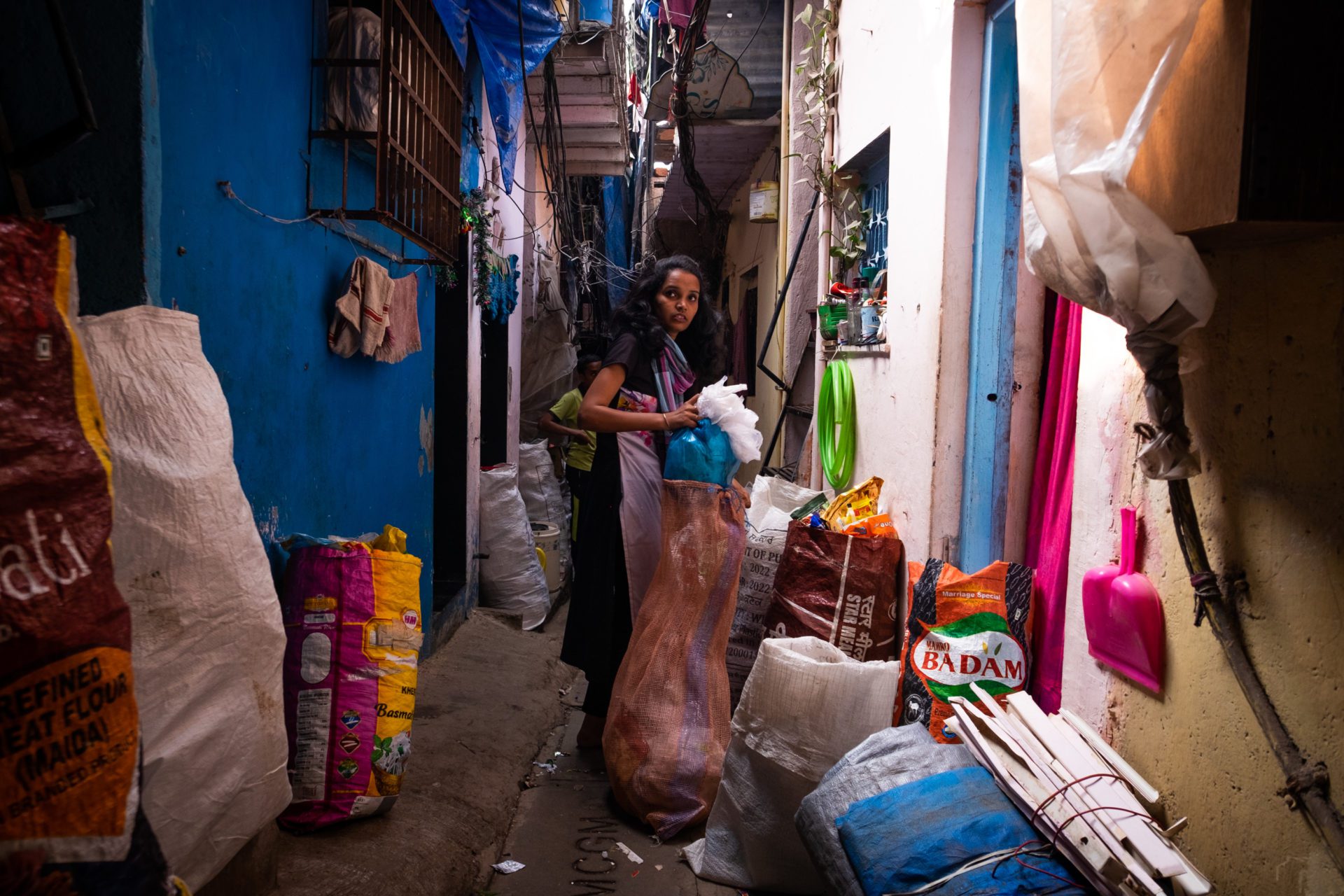
Vaibhavi Marathe lives with her family of four in Adarsh Chawl, a slum pocket in Mumbai’s western suburb of Andheri, where regular door-to-door waste collection takes place. At the entry of the slum, a dumpster lies overflowing with waste. Marathe works at GCF as a waste management expert and indicates that the pile of garbage was much higher a year ago when they started implementing segregation and collection on their own.
“Nobody here even knew what wet and dry waste was, I thought if I was going to tell others to improve their waste practices I should first implement it in my own area,” she said. The challenge here, Marathe explains, was that since tenements are small and garbage collection was irregular, people found it difficult to store their waste and it would simply get dumped outside. Marathe however, was determined to change this. With the help of a few other women in the locality, she convinced households in the chawl to store their dry waste for a week while GFC helped tie up with a dry waste collection and recycling agency for regular collection. Now every Saturday morning residents of Adarsh Chawl bring their dry waste to the lane where Marathe stays, where they work together to segregate plastic and glass bottles, multi-layer packaging, and more into larger sacks which are then collected by the agency and sent to recycling centers. “We collect almost 100 kgs every month from our chawl, and now looking at us, our neighboring chawl has started doing the same!” she says, beaming.
Anuja Sanghvi
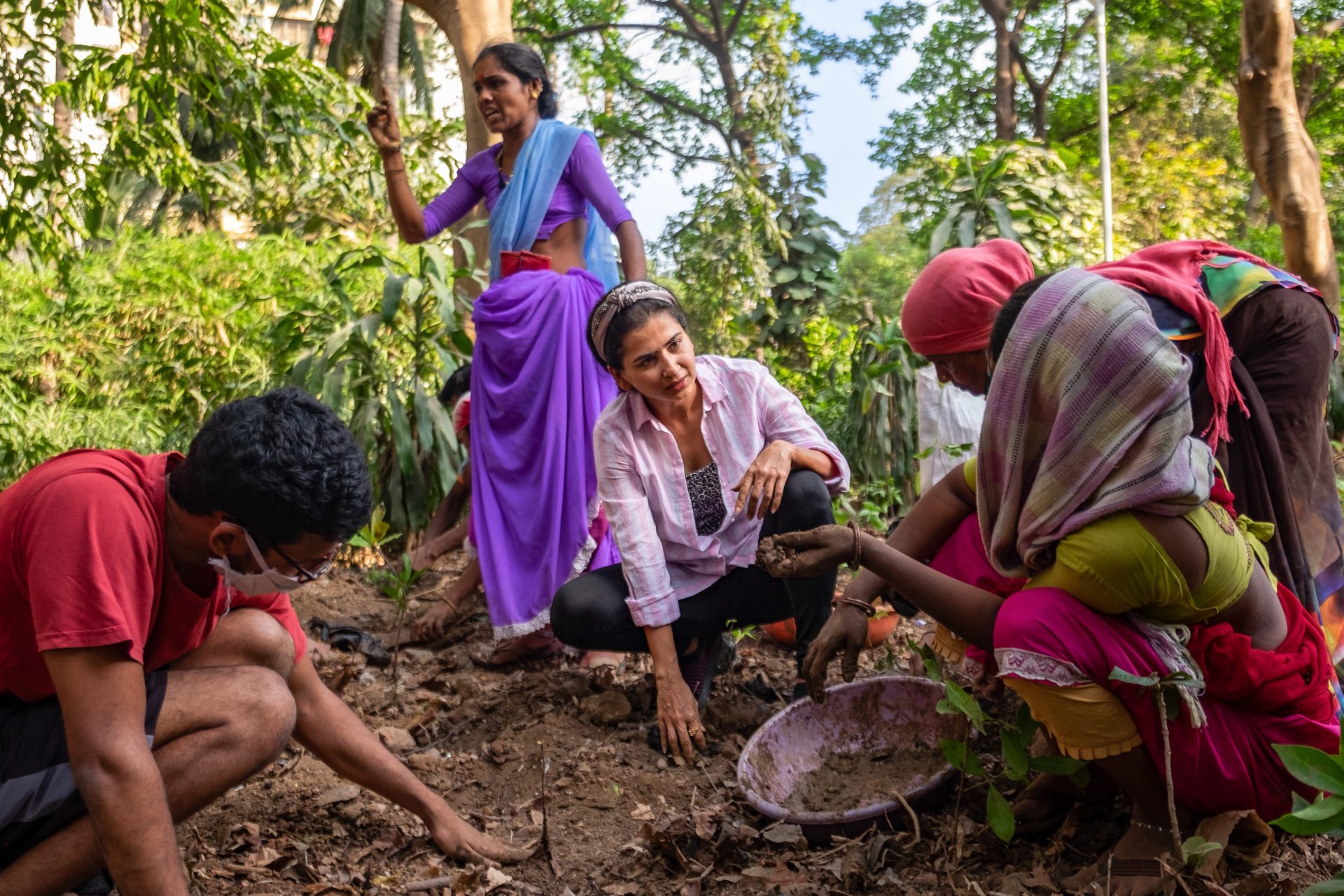
“The BMC [Brihanmumbai Municipal Corporation] is talking about the Miyawaki method now, but earlier when I would approach officials, they would tell me ‘we don’t know about these Japanese ideas’,” says Anuja Sanghvi. As someone who has lived in Mumbai and worked in the development and environmental sector, Sanghvi felt much was needed to improve the quality of air, water, and soil in the city. When she learned about the Miyawaki method of forest creation and saw dense Miyawaki forest in places as commercial as a factory complex, she wanted something like this in her own backyard in the city. Sanghvi believes the Miyawaki method of creating mini forests is ideal for a crowded metropolis like Mumbai where space is at a premium. In 2018, she made her first attempt to find pockets of land in the city to set up a Miyawaki forest. But with the concept still in the nascent phase, she found few takers.
Eventually, a local functionary in her southern Mumbai locality supported the endeavor and helped her secure permission to set up a small Miyawaki forest in Colaba Woods, a garden in South Mumbai. The project was a success and Sanghvi set up Emerald Sustainable Foundation to streamline her efforts. With support from local officials and Corporate Social Responsibility (CSR) funding from corporates, the Colaba Woods Miyawaki afforestation has expanded from an initial 5,000 trees to over 20,000. Other Miyawaki projects undertaken by Emerald in Mumbai include 8,000 trees planted at the CPRA garden, 3,000 trees in Bhakti Park, and an ambitious project currently being planned to plant over 30,000 trees each in the Mumbai suburbs of Mulund and Malad. As we walk through the Colaba woods garden, Sanghvi points at a patch of forest planted about two years ago. The area looks green and dense with growth well over my head. “In three years,” she says, “the 1.5-foot saplings we plant will grow to over 18 feet and at that point, each of them would annually sequester 25 kgs of carbon on average.” That’s a whopping 500 tons of carbon sequestration in Colaba woods alone, not bad for a small urban forest.

